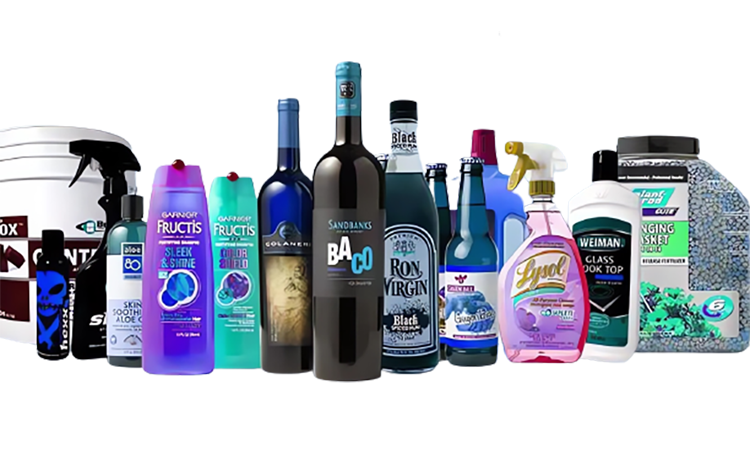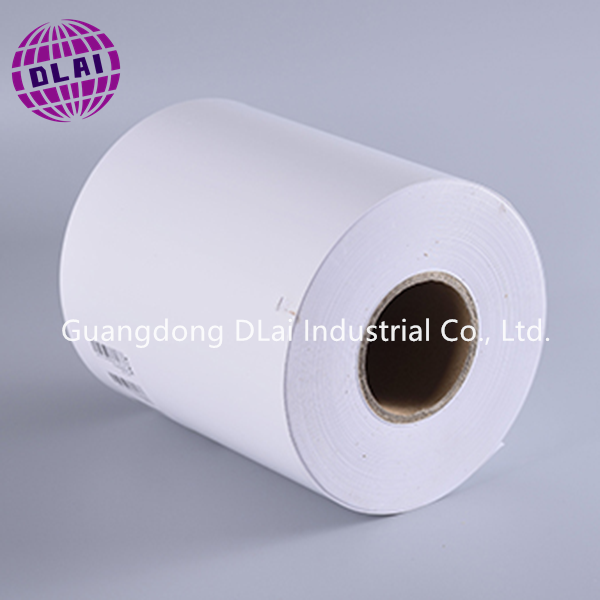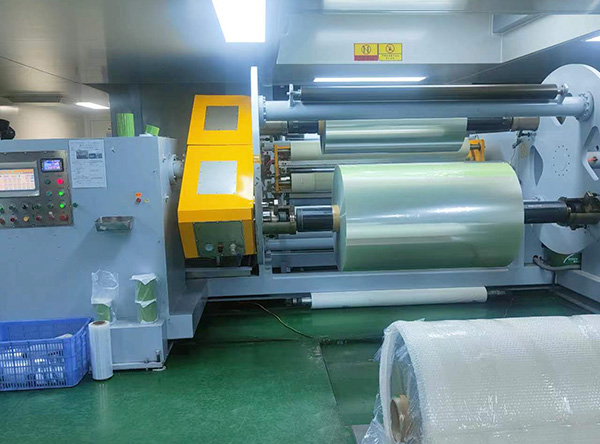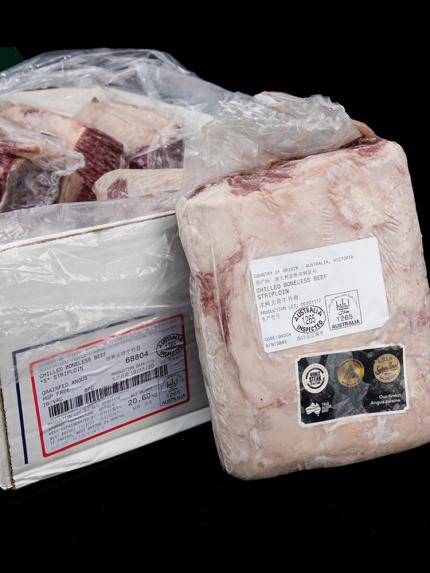I. Introduction
The importance of label materials in the fiercely competitive industry of food packaging is frequently underestimated. Far from being a mere visual enhancement, the label serves as the product's ambassador, conveying vital information to consumers and safeguarding their well-being. Consequently, it becomes imperative to make prudent choices when selecting label materials of superior quality capable of enduring diverse environmental challenges while effectively communicating precise product details. This article delves into the profound significance of employing high-quality label materials in food packaging and accentuates the manifold advantages they bestow.
II. The Role of Label Materials in Food Packaging
When it comes to food packaging, label materials play a vital role in conveying key information to consumers. Labels serve as a communication tool between products and customers, conveying details such as ingredients, nutritional information, allergen warnings and directions for use. It helps consumers make informed decisions based on their preferences, dietary restrictions and potential allergies.
There are many types of label materials used for packaging, each serving a different purpose and suited to specific packaging needs. From paper labels to synthetic materials, the choice of label material depends on factors such as the product's packaging requirements, environmental considerations and desired aesthetics. Understanding the different types of label materials available is crucial for businesses in the food industry.

One common label material used in food packaging is paper. Paper labels are versatile, cost-effective, and versatile. They can be easily printed and customized to meet specific labeling requirements. However, paper labels may not be suitable for all packaging applications, especially in environments where moisture or oil resistance is required.
Waterproof label materials are ideal for food packaging that requires water or oil resistance. These materials are typically made from synthetic substrates such as polypropylene or polyester, which provide excellent moisture resistance. Waterproof labels ensure important information remains clear and intact even under challenging conditions such as refrigeration or exposure to liquids.
In the food industry, where safety and compliance are critical, label materials must comply with certain standards and regulations. Food labels often require specific certifications, such as food contact materials (FCM) compliance. These certifications ensure label materials are free of harmful substances that could leach into packaged foods and pose health risks to consumers.
In addition, food labeling materials must adhere to certain performance characteristics. For example, labels must withstand extreme temperature conditions, including freezing or high-temperature sterilization processes. They should also maintain their adhesive properties over the expected shelf life of the product.
In addition to compliance and performance, label materials contribute to the overall brand experience and aesthetics. Labels provide businesses with the opportunity to showcase their brand image and differentiate their products from competitors. Customization options, such as embossing, foil stamping, or high-resolution printing, can enhance a product’s visual appeal and attract consumers.

In addition, labels ensure product authenticity and allow consumers to trust the brands they are exposed to. Authenticity labels, such as holograms or tamper-evident labels, help prevent counterfeiting and ensure consumers are purchasing authentic products. These labels provide peace of mind, especially for premium or high-value foods.
label materials play a vital role in food packaging. They provide important information to consumers, allowing them to make informed decisions about the products they purchase. Label materials must meet regulatory requirements, provide performance characteristics and help enhance the brand experience. When selecting food packaging label materials, it is critical to do thorough research and consider your specific packaging needs. By using the right label materials, businesses can communicate effectively with customers and build trust in their brand.
III. Characteristics of High-Quality Label Materials
As a top three company in the self-adhesive manufacturers industry, we [Donglai Company] are proud to produce high-quality label materials that meet our customers' needs and expectations. With our expertise in self-drying collagen materials and printing, we are able to offer our customers a wide range of choices in label materials.
When it comes to label materials, there are a few characteristics that define a high-quality choice. One of the most important qualities is durability and resistance to external factors such as heat, moisture and air. Tags go through a variety of environments and need to withstand these conditions without compromising their integrity. Our label material manufacturers understand this importance and ensure that our products will stand the test of time.
In addition to durability, label materials also need to exhibit strong adhesive properties. Labels are designed to stick to surfaces for long periods of time, so it's vital that the adhesive used maintains its strength. Our label materials are made with the highest quality adhesive, ensuring they stay securely in place and won't fall off easily.
In addition, compliance with regulatory requirements is another important aspect of high-quality label materials. Different industries have specific regulations for product labeling, and it is critical that labels comply with these requirements. As a reputable label material manufacturer, we ensure that our products comply with all necessary regulations, giving our customers peace of mind that their labels are compliant.

IV. Benefits of Using High-Quality Label Materials
Durability: Labels made from high-quality materials are more resistant to tearing, smudging, and peeling. This durability ensures that the label remains intact throughout the product's lifespan, even in harsh storage conditions or during transport.
Compliance: Certain industries, such as pharmaceuticals or chemical manufacturing, have strict regulations regarding labeling. Using high-quality materials ensures that labels meet compliance requirements, including resistance to chemicals or extreme temperatures.
Safety: High-quality label materials can include features such as tamper-evident seals or security holograms, which help protect consumers from counterfeit or tampered products. These safety features build trust and confidence in the brand.
Environmental sustainability: Many high-quality label materials are eco-friendly and recyclable. Using sustainable label materials can help reduce the carbon footprint and support a brand's commitment to environmental responsibility.
Improved product information: High-quality label materials allow for clear, accurate, and detailed product information. This includes nutritional facts, ingredients, allergen warnings, and usage instructions. Clear and comprehensive information helps consumers make informed choices and can be especially important for individuals with dietary restrictions or allergies.
In summary, using high-quality label materials not only enhances branding and marketing efforts but also improves consumer convenience, product safety, compliance, and environmental sustainability.
V. Challenges in Choosing the Right Label Materials
When labeling products, choosing the right label material is crucial. Compatibility with a variety of packaging materials is a primary consideration. Additionally, cost considerations and budget constraints pose challenges, so it is important to find a balance between quality and affordability. Additionally, understanding labeling regulations and standards can be quite challenging. To address these challenges, it is necessary to conduct in-depth research and collect relevant information to make informed decisions.
Compatibility with various packaging materials is one of the main challenges in choosing the right label material. Different packaging materials (such as glass, plastic or metal) have different properties that affect the effectiveness and durability of the label. Adhesive performance and flexibility are key factors to consider when selecting label materials. For example, labels applied to materials that experience extreme temperature changes should have adhesive properties to ensure they stay securely in place. Conducting tests and seeking expert advice is essential to determine the compatibility of label materials with specific packaging materials.
Cost considerations and budget constraints are also significant challenges in selecting label materials. Striking a balance between quality and affordability is crucial. Choosing cheap label materials can negatively impact overall product presentation by impacting label longevity and readability. However, investing in high-quality label materials can lead to a tight budget, especially for small businesses or start-ups. It is important to assess the cost implications and evaluate the long-term benefits before making a decision.
Understanding labeling regulations and standards is another challenge businesses face. Various industries have specific labeling requirements, such as including nutritional information, allergen warnings, or meeting safety standards. Failure to comply with these regulations may result in legal consequences, product recalls, or damage to brand reputation. Staying up to date on labeling regulations and seeking professional guidance can help businesses navigate these challenges and avoid potential pitfalls.
To overcome these challenges, it is crucial to do deep research and collect relevant statistics, quotes, and examples from reliable sources. It is crucial to understand the latest technologies and trends in the label industry as well as consumer preferences. Conducting market research can provide insight into consumer preferences and help determine which label materials are best suited for a specific target audience. Seeking the advice of industry experts and consulting reliable sources can provide valuable guidance in making informed decisions.
In summary, selecting the right label material can be challenging due to a variety of factors, including compatibility with packaging materials, cost considerations, and understanding labeling regulations. In order to overcome these challenges, it is crucial to conduct thorough research and gather relevant information. By remembering to consider all factors and seek professional advice, businesses can choose label materials that not only meet their requirements but also enhance the overall product presentation. Keeping up with industry trends and consumer preferences is important to stay competitive in the market. Ultimately, the right label material helps create a successful and visually appealing product.

VI. Industry Trends and Innovations
Industry Trends and Innovation: The Rise of Environmentally Friendly and Smart Label Technologies
In today's fast-paced, ever-evolving world, industries are constantly striving to stay ahead by adapting to new trends and innovations. The label materials industry is no exception, constantly looking for innovative ways to meet changing consumer demands. Among the latest developments in this field, two trends stand out: the rise of eco-friendly labeling options and the use of smart label technology. Additionally, customization and personalization have become prominent in the label materials industry.
One important trend that has gained traction in recent years is the growing demand for eco-friendly label options. With an increasing focus on sustainability and environmental awareness, consumers are now looking for products with minimal environmental impact. As a result, companies are turning to eco-label materials. This includes utilizing biodegradable and recyclable materials to create labels that can be disposed of without harming the environment.
According to a report by MarketsandMarkets, the global environmental label market is expected to reach US$5.2 billion by 2026, with a compound annual growth rate of 14.1% from 2021 to 2026. This impressive growth can be attributed to growing consumer awareness of eco-friendly labels. The importance of sustainable practices. Companies that adopt eco-label options not only meet consumer expectations but also position themselves as responsible and environmentally conscious brands.
Another significant development in the label materials industry is the use of smart label technology. Smart labels incorporate advanced technologies such as near field communications (NFC) and radio frequency identification (RFID) to provide enhanced functionality and consumer engagement. These technologies enable real-time tracking, interactive product information, and even personalized offers.
Smart labels are already used in various industries, including retail, healthcare and logistics. For example, in retail, smart labels enable seamless inventory management and prevent theft. In healthcare, they ensure accurate medication management and tracking. According to a report by Inkwood Research, the global smart label market is expected to reach $16.7 billion by 2026, indicating that the adoption rate of this trend is increasing.
In addition, customization and personalization have become major trends in the label material industry. As consumers seek unique and personalized experiences, labels are no longer limited to providing basic information. They now serve as a platform for brands to showcase their creativity and connect with their customers. Custom labels allow businesses to stand out in a crowded marketplace and leave a lasting impression on consumers.
For example, craft breweries often use custom labels to reflect their brand’s personality and story. By incorporating personalization elements, such as the customer's name or special message, companies can create a sense of exclusivity and build a stronger connection with their customers.
In summary, the label materials industry is witnessing exciting trends and innovations. The rise of eco-friendly label options, adoption of smart label technology, and focus on customization and personalization are changing how labels are perceived and used. As consumer preferences continue to change, label material manufacturers must embrace these trends and stay at the forefront of innovation.

VII. Case Studies: Success Stories in Label Material Selection
Several companies have achieved positive results by choosing high-quality label materials. Success stories like these highlight the importance of investing in high-quality label materials.
The success story of XYZ Pharmaceuticals illustrates the importance of label material selection. XYZ Pharmaceuticals, a leading pharmaceutical company, faced challenges in effectively labeling its products. Their existing label materials were prone to staining and fading, leading to poor product identification and potential regulatory issues. Realizing the impact this could have on their business, XYZ Pharmaceuticals decided to invest in high-quality label materials.
After extensive research, XYZ Pharmaceuticals found a label material supplier that offered durable and long-lasting materials designed specifically for pharmaceuticals. The new label material is resistant to moisture, chemicals and harsh environmental conditions, ensuring that important information remains intact throughout the product's life cycle. This improves label legibility and durability, reducing the risk of errors and non-compliance. XYZ Pharmaceuticals experienced a significant decrease in customer complaints related to illegible labels and an increase in overall customer satisfaction.
Another successful example of label material selection is ABC Foods, a well-known food manufacturing company. ABC Foods faces the challenge of maintaining consistency across its various food brands. Their previous label materials could not withstand the stringent requirements of different packaging materials and storage conditions. This results in inconsistent and unattractive labels, negatively impacting brand image.
VIII. Conclusion
High-quality label materials serve a greater purpose in food packaging, as they go beyond mere decoration. They play a vital role in providing accurate product information and ensuring consumer safety. Durability, adhesive strength, compliance with regulations, and other characteristics are essential for label materials to effectively fulfill their function. Investing in high-quality label materials offers advantages such as improved branding, enhanced consumer convenience, and prolonged product freshness. However, challenges arise, such as ensuring compatibility with packaging materials and considering costs. Nevertheless, by staying informed about industry trends and innovations, businesses can enhance their label material selection process. Ultimately, high-quality label materials represent a strategic investment that can greatly contribute to a brand's success and reputation in the fiercely competitive food packaging market.

About us
As a TOP3 company in the self-adhesive manufacturer industry, we mainly produce self-adhesive raw materials. We also print various high-quality self-adhesive labels for liquor, cosmetics/skin care product self-adhesive labels, red wine self-adhesive labels, and foreign wine. For stickers, we can provide you with various styles of stickers as long as you need or imagine them. We can also design and print the specified styles for you.
Donglai Company has always adhered to the concept of customer first and product quality first. Looking forward to your cooperation! Welcome to call us!
Feel free to contact us anytime! We're here to help and would love to hear from you.
Adress: 101, No.6, Limin Street, Dalong Village, Shiji Town, Panyu District, Guangzhou
Whatsapp/Phone: +8613600322525
mail: cherry2525@vip.163.com
Sales Executive
Post time: Oct-26-2023

